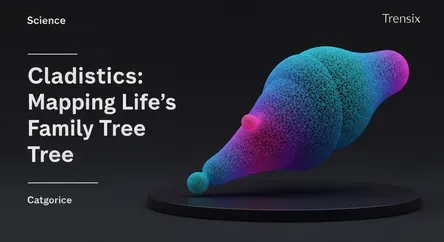Science
Cladistics: Mapping Life's Family Tree

Discover cladistics, the scientific method for classifying organisms based on shared ancestry and mapping the evolutionary 'family trees' of life.
What is it?
Cladistics is a modern method of biological classification that arranges organisms based on shared evolutionary history. Unlike traditional systems that might group organisms by overall physical similarity, cladistics focuses on 'shared derived characters'—unique traits that a group of organisms inherited from a common ancestor and are not found in more distant relatives. This approach aims to create a more accurate representation of life's branching history. The results are visualized in diagrams called cladograms, which look like family trees, illustrating how different species are related to one another through a series of branching points representing common ancestors.
Why is it trending?
Cladistics is gaining prominence due to massive advancements in DNA sequencing and computational power. Genetic data provides a vast and precise dataset for comparing organisms, often revealing evolutionary relationships that were not apparent from physical anatomy alone. These genomic analyses are leading to major revisions of the tree of life, sometimes with surprising findings that challenge long-held classifications. As scientists sequence more genomes, our understanding of evolutionary pathways becomes clearer, making cladistics a dynamic and constantly evolving field of study that frequently generates new scientific insights.
How does it affect people?
Cladistics has significant real-world applications. In medicine and epidemiology, it is vital for tracking the evolution of viruses and bacteria, such as SARS-CoV-2 or influenza strains. By understanding their evolutionary relationships, scientists can predict how they might spread and evolve, aiding in the development of effective vaccines and treatments. In conservation, cladistics helps identify genetically distinct species or populations that are priorities for protection. It also provides a foundational framework for understanding evolution, shaping biology education and informing our perspective on humanity's place in the natural world.